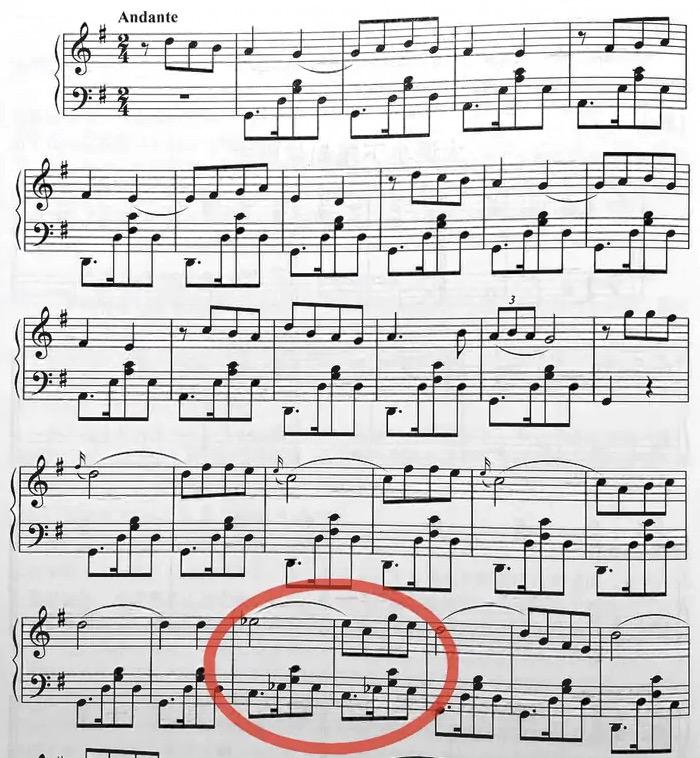Classical Sheet Music: How Do Major Keys Borrow Chords from the Parallel Minor?
Understanding how chords are borrowed from parallel minor keys is a fascinating topic, especially for students exploring more advanced classical sheet music. This harmonic technique adds depth and emotional color to compositions, and mastering it can greatly improve both performance and improvisation skills.
Parallel Major and Minor Keys
Parallel major and minor keys share the same tonic but differ in key signatures. For example, C major and C minor both start on C, making them parallel. However, C major has no sharps or flats, while C minor includes three flats.


This distinction is crucial when interpreting classical sheet music or composing new arrangements. Borrowing chords between these keys introduces variety and expressiveness, enhancing the musical texture—something particularly useful during piano online lessons focused on harmony or composition.
What Does Borrowing Chords Mean?
When you borrow a chord from a parallel minor key, you use its tonal characteristics within a major key setting. For instance, in a piece written in C major, you might use chords from C minor—especially the i, iv, and v chords.
To do this properly, be sure to apply the accidentals from the minor key as well. Since C minor has E♭, A♭, and B♭, the borrowed chords appear like this:

In the context of C major, these borrowed chords become:

They are labeled as minor tonic (i), minor subdominant (iv), and minor dominant (v). In Roman numeral analysis, they are written in lowercase to distinguish them from their major counterparts.
These kinds of substitutions can make your easy sheet music arrangements sound more sophisticated and emotionally rich, providing a great way to practice tonal variation in piano notes exercises.
Guidelines for Using Borrowed Chords
Whether you're composing or playing, it's important to understand when and how to use these chords:
l Make sure the chord contains the melody note, as in standard accompaniment techniques.
l Use these minor chords to add harmonic color but avoid starting or ending a piece with them.
l Among the three, the minor iv chord is the most commonly used; the i and v chords appear more sparingly.
This understanding is vital in interpreting advanced classical sheet music or exploring reharmonization in piano online lessons.
Song Example: "O Sole Mio"
To see this in action, let’s examine a popular piece—“O Sole Mio.” While many versions of this song exist, the harmonic analysis applies universally.
The song is written in G major, as indicated by its key signature and final note.

Take a close look at the measure marked in red. The chord in the left hand—C, E♭, and G—is the minor iv chord in G major, borrowed from G minor.

This usage allows the accompaniment to match the melody note E♭ while introducing a rich, unexpected color. It's a subtle but powerful example of how borrowing chords from a parallel minor key can enhance emotional expression.
Understanding how to identify and apply these techniques is a valuable skill, particularly for students transitioning from easy sheet music to more advanced pieces or composing their own music using structured piano notes.
Conclusion
Borrowing chords from parallel minor keys opens up a new world of harmonic possibilities in classical sheet music. It enriches your playing with emotional complexity and provides a beautiful tool for contrast and surprise. As you progress through piano online lessons, try to incorporate these techniques into your playing and arrangements to develop a deeper, more expressive musical voice.
FAQs
Q1: Are borrowed chords common in classical sheet music?
Yes, many composers from the Romantic and late Classical periods frequently used borrowed chords to introduce tension, emotion, and harmonic contrast.
Q2: Can beginners use borrowed chords in easy sheet music arrangements?
Absolutely. Even in easy sheet music, using a minor iv chord can add sophistication. It's a great tool for students looking to go beyond basic triads.
Q3: How can I practice using borrowed chords?
Start by analyzing piano notes in familiar songs and try replacing standard major chords with their parallel minor versions. This is also a great exercise to explore in piano online lessons with guided feedback.












